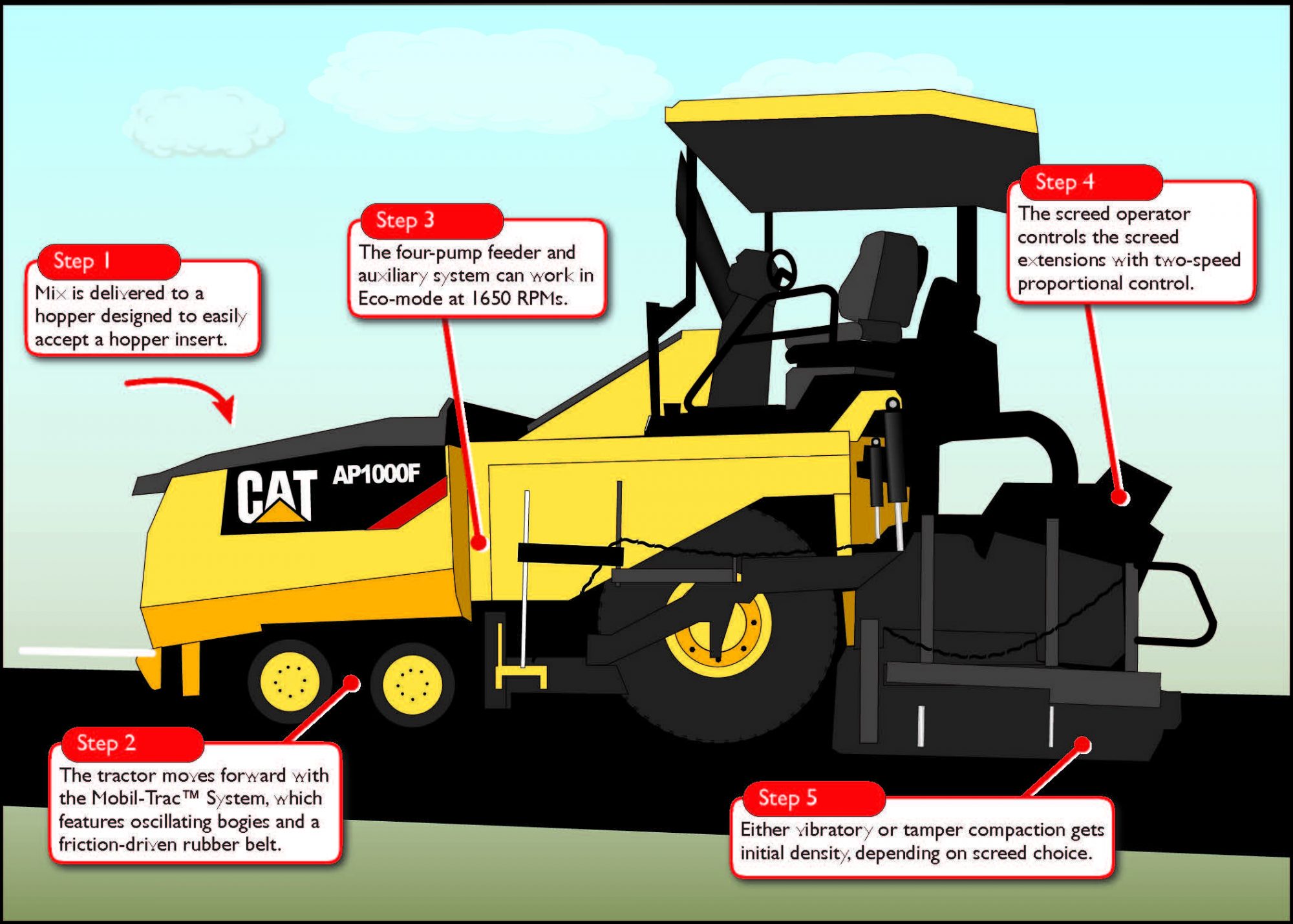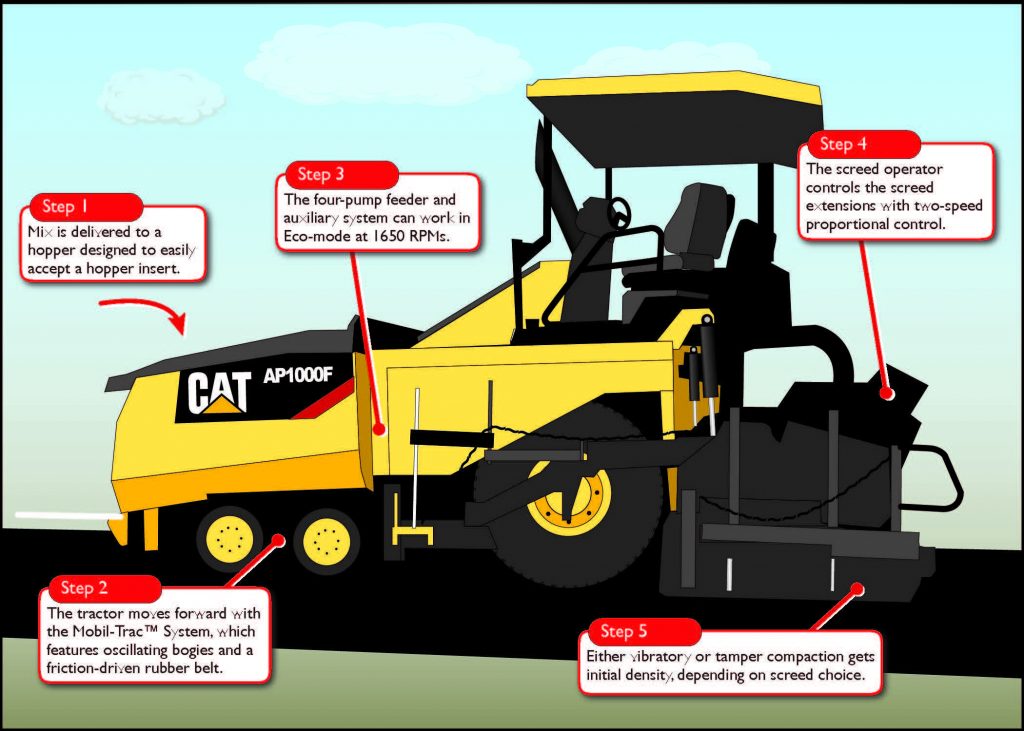Here’s How the Caterpillar AP1055F Paver Works
BY AsphaltPro Staff

Performance improvements and technology with a customer-friendly interface are key benefits of the new F-Series pavers from Caterpillar Global Paving. Here’s how the AP1055F works.
The first step, as you would expect, is to get mix to the hopper. Whether you use a material transfer device or a haul truck, you first deposit mix into the receiving hopper, which has a standard entry design featuring an inclined flat floor plate and large tie-down loops to facilitate hopper insert use. The paver operator activates the hoppers and front hydraulic apron with a single push and release of a button when in automatic mode.
From there, the conveyors and augers move material to the screed. Either the paver operator or the screed man can control the ratio with the color touchscreen control panels at their stations. The operator still uses switches to control the most frequently used controls. An exclusive proportional lever, which adjusts the screed extender at a rate based on how hard the operator pushes, is also new. When released the lever returns to the center to prevent overcompensation.
As mix moves through the machine, the tractor moves forward with fully bogied support rollers. Because the oscillating bogies allow the rollers to maintain contact with the original surface, the tractor experiences fewer deviations and tow-point movement than it would otherwise, leading to smooth movement and placement of mix.
From the head of material, the mix moves to the electrically heated screed. One of the screed options available for this paver is the SE60 VT XW, which allows vibratory and tamper bar compaction to get a percentage of density prior to rolling. One of the safeguards built into the machine takes place in this area. The operator can set the augers to automatically rise when the screed is lifted to prevent damage caused by manholes when maneuvering the paver.

For more information, contact Caterpillar at www.xxxxxxx
Step 1: Mix is delivered to a hopper designed to easily accept a hopper insert.
Step 2: The tractor moves forward with the Mobil-Trac™ System, which features oscillating bogies and a friction-driven rubber belt.
Step 3. The four-pump feeder and auxiliary system can work in Eco-mode at 1650 RPMs.
Step 4. The screed operator controls the screed extensions with two-speed proportional control.
Step 5. Either vibratory or tamper compaction gets initial density, depending on screed choice.
